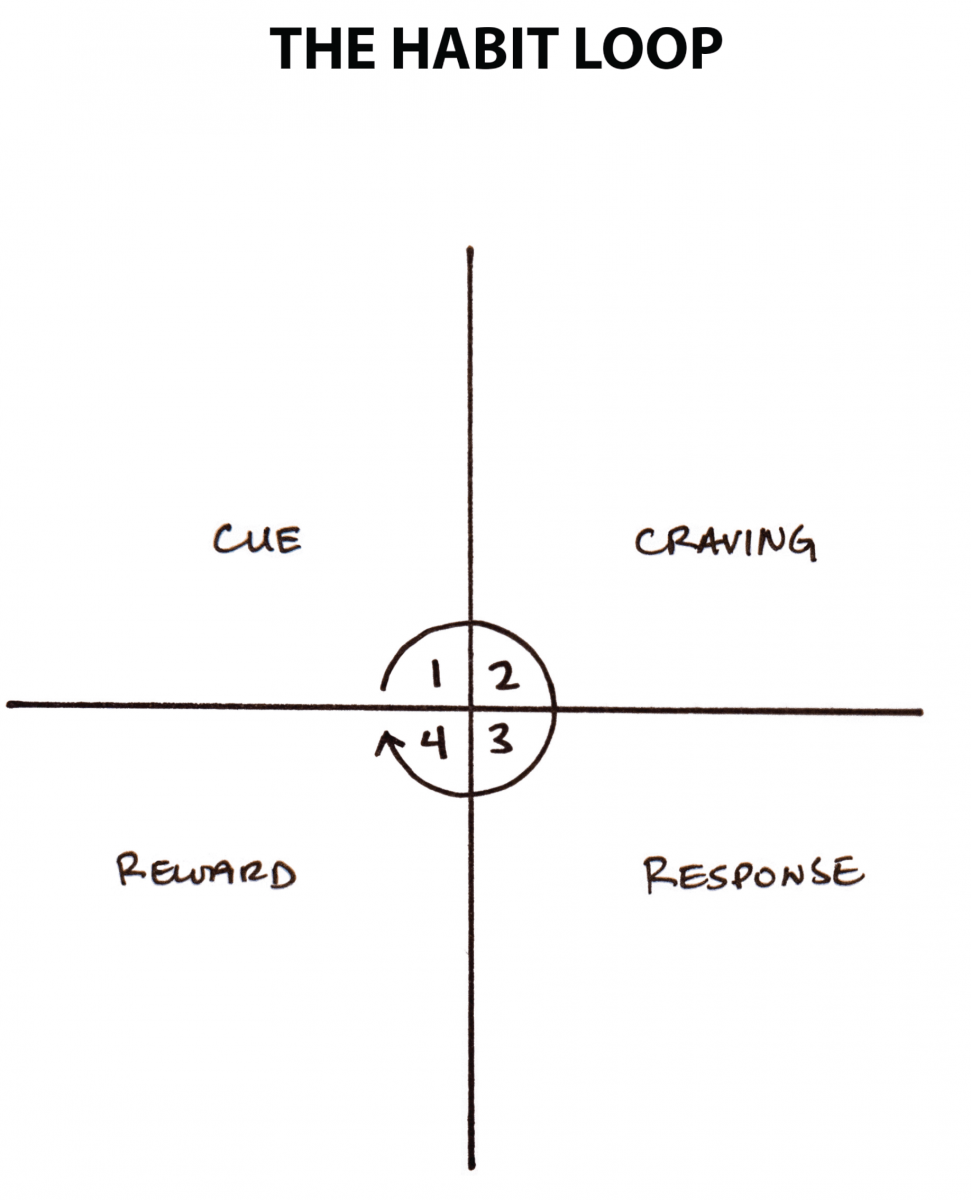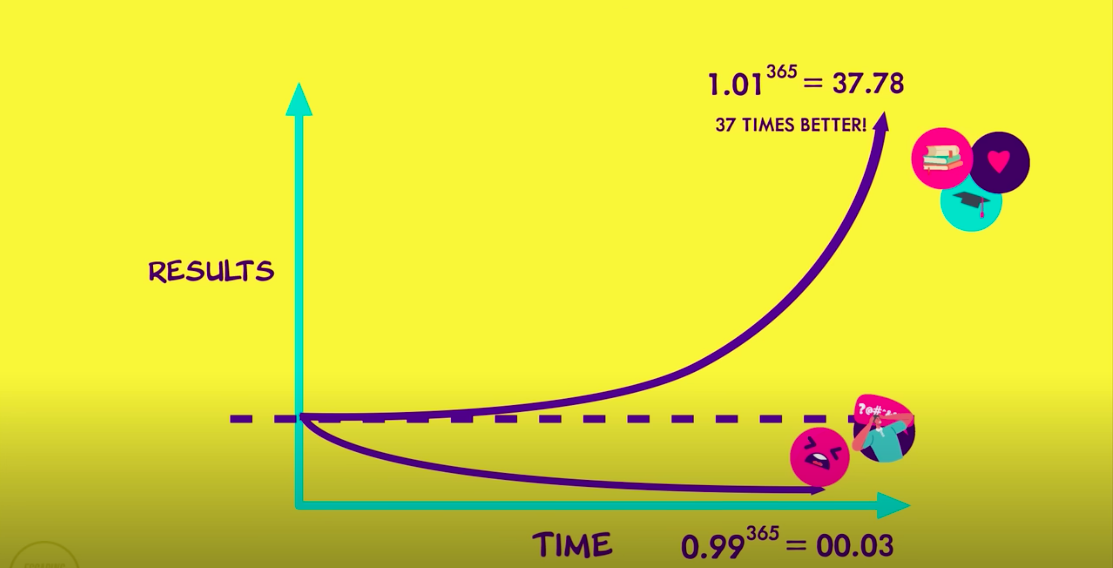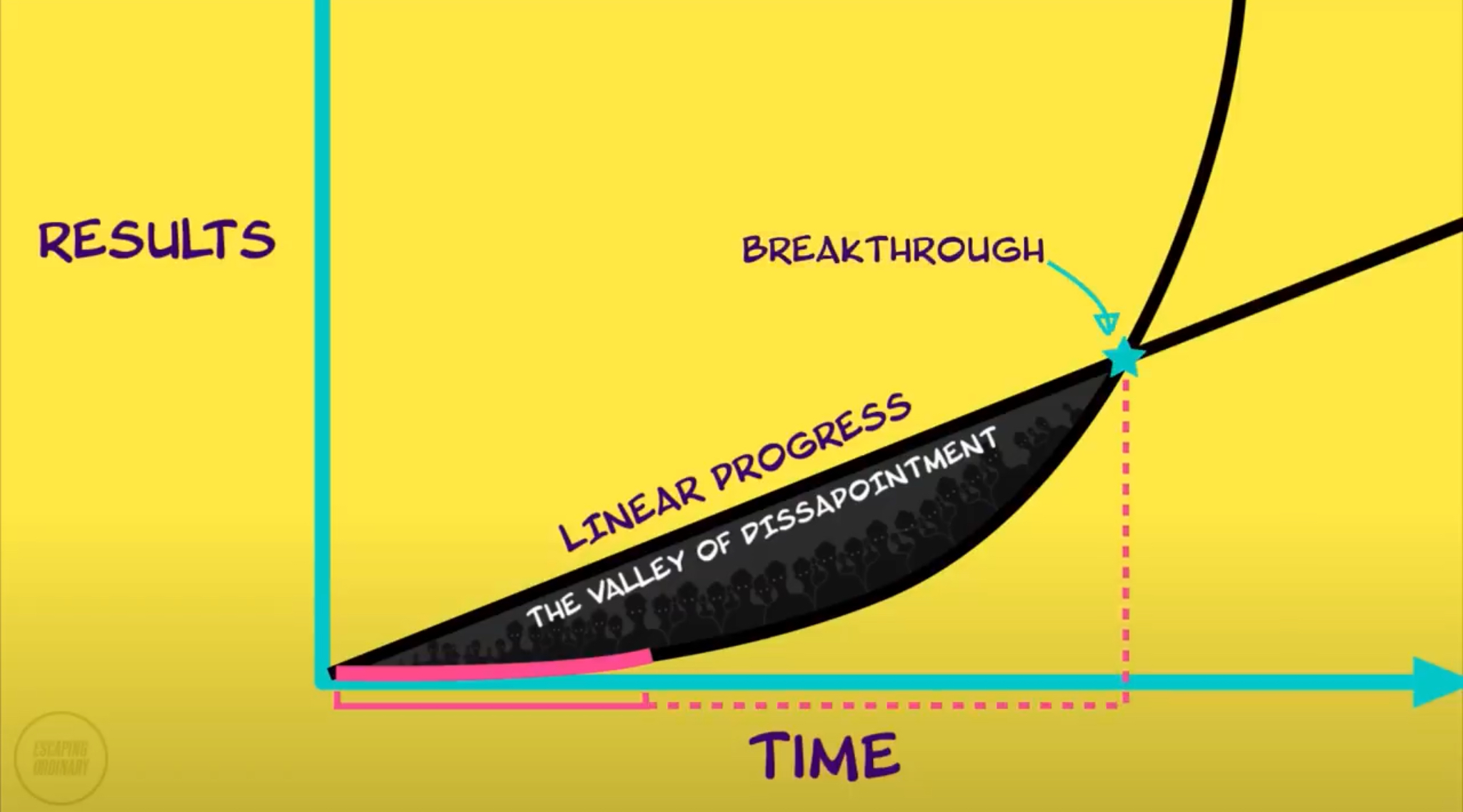Summary of book Atomic Habits.
You are your habits(We are the sum of our habits).
How to build good habits and break bad ones?
How to make the small changes that will transform your habits and deliver remarkable results?
How to build a system for getting 1% better every day?
TL;DR
3 Lessons & 4 Laws
3 Lessons
Lesson 1: Small habits make a big difference
Lesson 2: Forget about setting goals. Focus on your system instead.
Lesson 3: Build identity-based habits
- Decide the type of person you want to be.
- Prove it to yourself with small wins.
4 Laws

| Cue | Craving | Response | Reward |
|---|---|---|---|
| Obvious | Attractive | Easy | Satisfying |
How to create a good habit:
- The 1st law (Cue): Make it obvious.
- The 2nd law (Craving): Make it attractive.
- The 3rd law (Response): Make it easy.
- The 4th law (Reward): Make it satisfying.
How to break a bad habit:
- Inversion of the 1st law (Cue): Make it invisible.
- Inversion of the 2nd law (Craving): Make it unattractive.
- Inversion of the 3rd law (Response): Make it difficult.
- Inversion of the 4th law (Reward): Make it unsatisfying.
Atomic Habits
Atomic Habits: Tiny changes, remarkable results.
Just as atoms are the building blocks of molecules, Atomic Habits are the building blocks of remarkable resutls.
Atomic Habits is the definitive guide to breaking bad behaviors and adopting good ones in four steps, showing you how small, incremental, everyday routines compound into massive, positive change over time.
The power of atomic habits
A slight change in your daily habits can guide your life to a very differenct destination. -- James Clear
- Massive Action vs 1% Improvements(The power of compound interest)

Success is the product of daily habits, not once-in-a-lifetime transformations. -- James Clear
The true about progress
In fact, progress is not linear. The most powerful outcomes of any compounding process are delayed so Patience is required.

Goals vs Systems
- Forget about goals, focus on system instead
- Goals are good for setting a direction, but systems are best for making progress.
A system of atomic habits
Atomic habits
Just as atoms are the building blocks of molecules, atomic habits are the building blocks of remarkblae resutls.
3 layers of behavior change
- Outcomes
- Processes
- Identity
Most people focus on the outcomes but the best way to change your habtis is by focusing on the person you want to become instead of the results you want.
The key to building lasting habits is focusing on creating a new identity first. Your current behaviors are simply a reflection of your current identity. What you do now is a mirror image of the type of person you believe that you are (either consciously or subconsciously).
To change your behavior for good, you need to start believing new things about yourself. You need to build identity-based habits.
Changing your beliefs isn’t nearly as hard as you might think. There are two steps.
- Decide the type of person you want to be.
- Prove it to yourself with small wins.
Your identity emerges out of your habits. Every action is a vote for the type of person you wish to become.
- The goals isn't to run a marathon, its's to become a runner.
- The golas isn't to learn a instrument, it's to become a musician.
- Tells yourelf "I am a runner"(running & beging).
- Every time you do a workout, you are an athlete.
- Every time you write a line of code you are an engineer.
The Habit Loop
Cue -> Craving -> Respoinse -> Rewards
- Example 1
- Cue: Phone buzz
- Craving: want to know who messaged
- Response: Pick up phone
- Reward: Solve the problem of who messaged
- Exmaple 2
- Cue: Minds goes blank at work
- Craving: Want to alleviate frustration
- Response: Check social media
- Reward: Satified the need to feel loss frustrated.
Try to think of any cues in your daily life that are initially your good or bad habits loops.
4 Laws
Law 1: Make it Obvious
1.1 Habit Scorecard
Until you make the unconscious conscious, it will direct your life and you will call it fate. -- Carl Yung
1.2 Set a time and place
"I will [behavior] at [time] in [this location]"
1.3 Stacking Habits
"After [current habit], I will [new habit]"
1.4 Environments vs Motivation
Environments is the invisible hand that shapes the human behavior. -- James Clear
Make the cues of good habits obvious and visible. Design your enviroments, "One space, One Use".
Law 2: Make it Attractive
2.1 Dopamine
2.2 Temptation bunding
Pair an action you want to do with an action you need to do.
2.3 Group influence
2.4 Where Cravings come from
2.5 Reprogram you brain to enjoy hard habits
Create a motivation ritual. Do something you enjoy immediately before a difficult habit.
Enjoying play games. You can make hard habits more attractive if you can learn to associate them with a positive experience.
Law 3: Make it Easy
3.1 Reduce friction: The law of least effort
Decrease the number of steps between you and your good habits.
3.2 Prime the environment
Prepare the environment to make future actions easier.
3.3 Master the decision moment
Optimize the small choices that deliver outsized impact.
3.4 Use the Two-Minute Rule
Downscale your habit until they can be done in two minutes or less.
3.5 Automate your habits
The two-minute rule aims to banish procrastination and help people accomplish small tasks. Here's what the rule says: if you can do an action in two minutes or less, tackle it at the moment — and don't delay. This has the potential to deliver long-term benefits.
Law 4: Make it Satisfying
4.1 Use reinforcement
Rewarding yourself and feeling successful. Give yourself an immediate reward when you complete you habit.
4.2 Make "doing nothing" enjoyable
When avoiding a bad habit, design a way to see the benefits.
4.3 Use a habit tracker
Keep track of your habit streak and "don't break the chain".
4.4 Never miss twice
When you forget to do a habit, make sure you get back on track immediately.
Lost days hurt you more than successful days help you.